HOME
"The Ships"
featuring
- Maritime Middelfart, - page
3 -
Ships, - final views, - the
Navy Association, - and whale hunting!
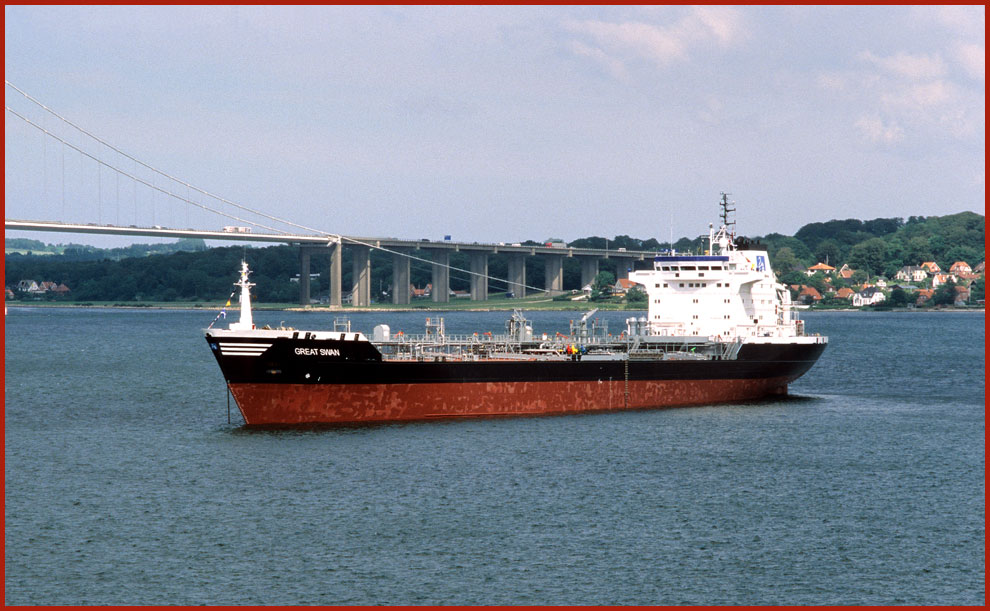
M/T "Great Swan"
- a final picture of the biggest
ship registered in Middelfart -
(Photographed while at anchor
outside the city on June 30. 2006.)
(Photography by Karsten Petersen)
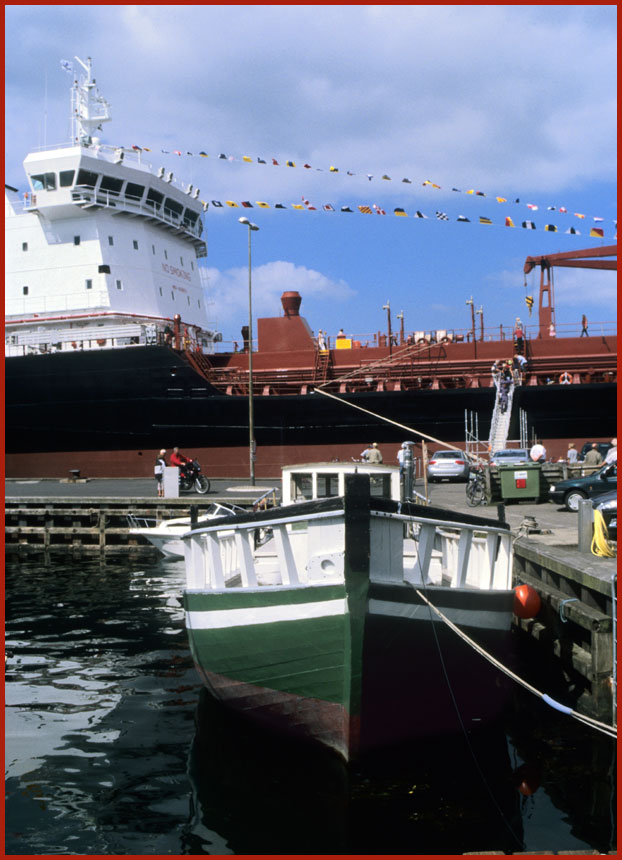
M/T "Fionia Swan" and "Nordstjernen"
- and a final view of Middelfart's
newest- and oldest ship -
(Photography by Karsten Petersen)
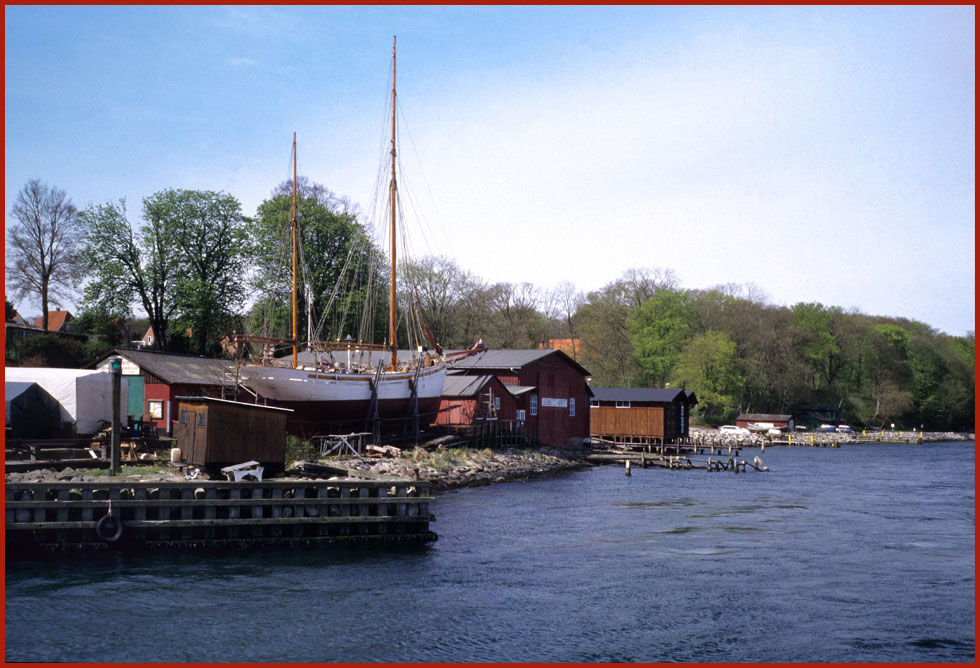
Lillebælt-Værftet
, - the old, traditional ship yard in Middelfart
- here a final overall view
with a ship on the slipway -
(Photography by Karsten Petersen)
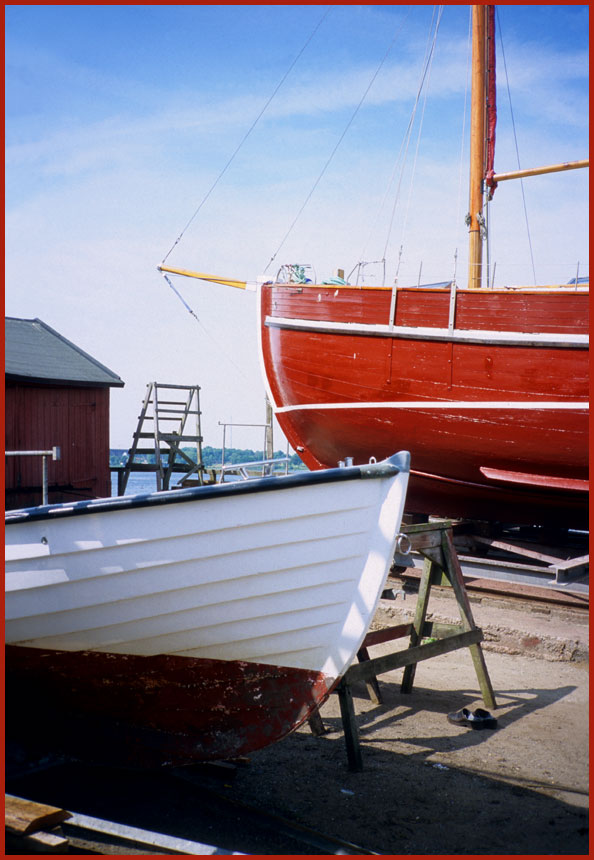
Lillebælt-Værftet
- the old ship yard
- and a final impression of
boats, - high and dry -
(Photography by Karsten Petersen)
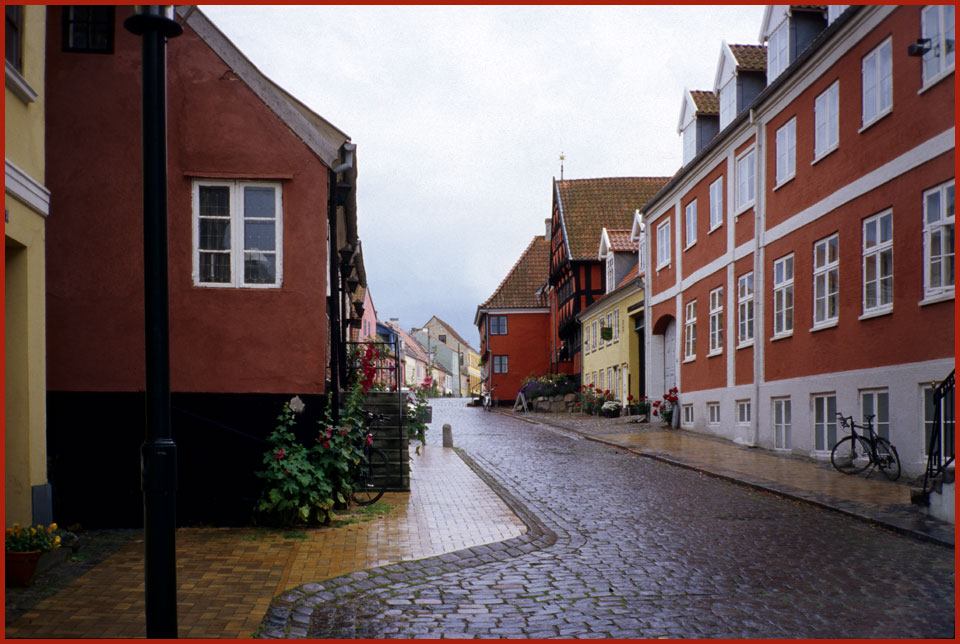
"Brogade" - "Bridge Street"
- a final view, - in rain -
(Realized that I have shown
too many sunshine pictures, but rain is also VERY beautiful.)
(Photography by Karsten Petersen)
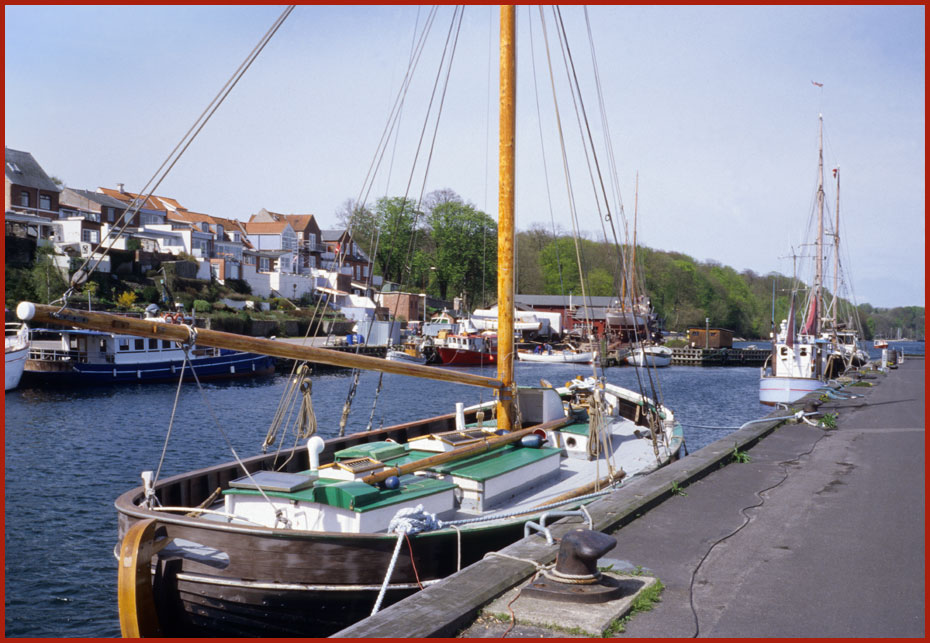
Gammel Havn - "Old harbour"
- one more view over this wonderful
cultural asset -
(Photography by Karsten Petersen)
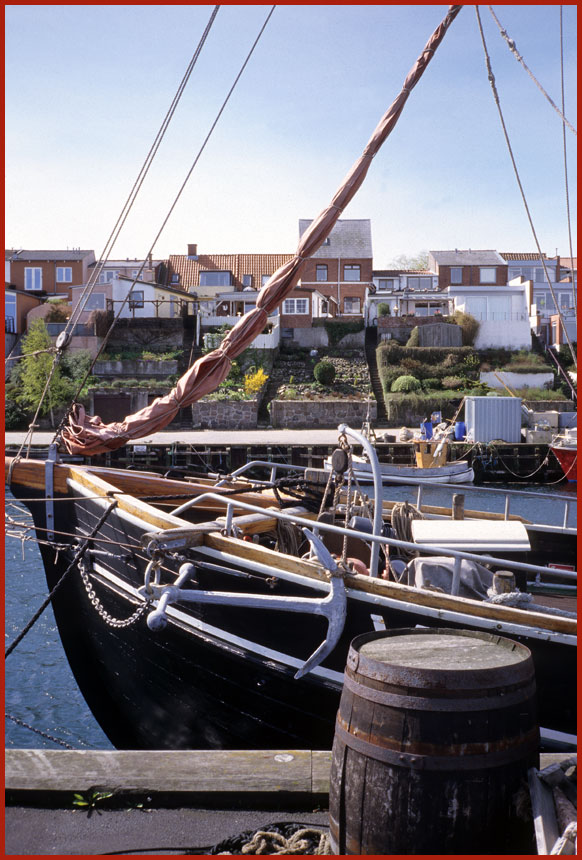
Gammel Havn - "Old Harbour"
- a final view over this unique
maritime environment of Middelfart -
(The gardens in the background
are nick-named the "Hanging Gardens".)
(Photography by Karsten Petersen)
--------------------------------------------------------------------------------------------------------------------------
Middelfart Navy Association
Earlier in this section on maritime
Middelfart, I mentioned the modesty of the Middelfart Navy association's
club house when compared to the palace like club in Marstal.
However, - the more modest
Middelfart club house has something that Marstal cannot compete with: A
truly magnificent and perfect location, - right at the waters edge -,
with a great view over the water and a truly wonderful wind indicator on
the roof.
Beat that Marstal!!!!
:-)
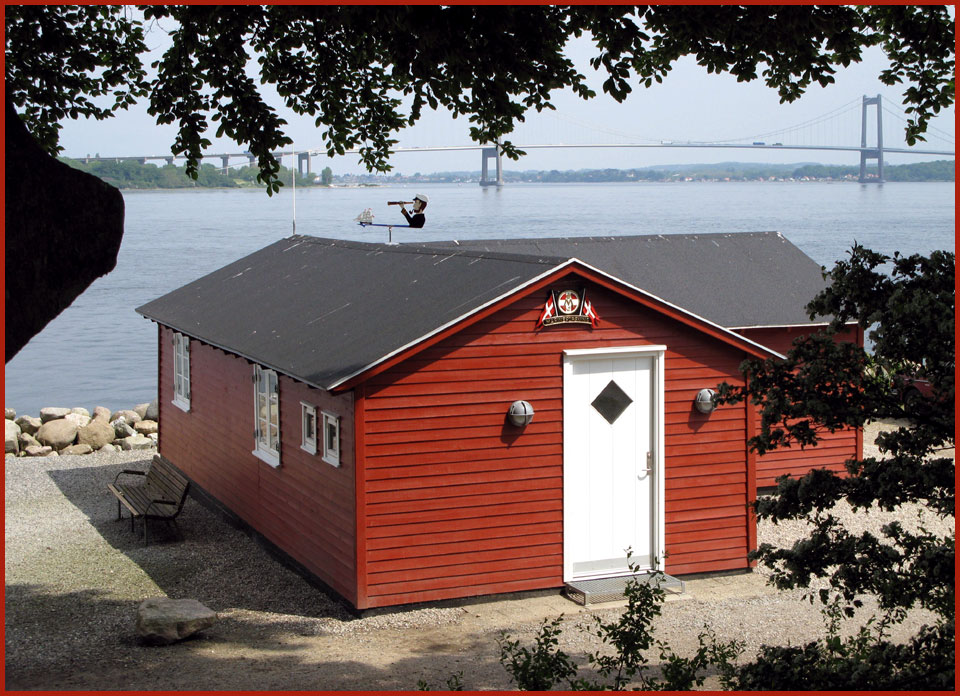
The Club House of Middelfart
Marine Association.
- right by the water with it's
view, - and a great wind indicator -
(Photography by Karsten Petersen)
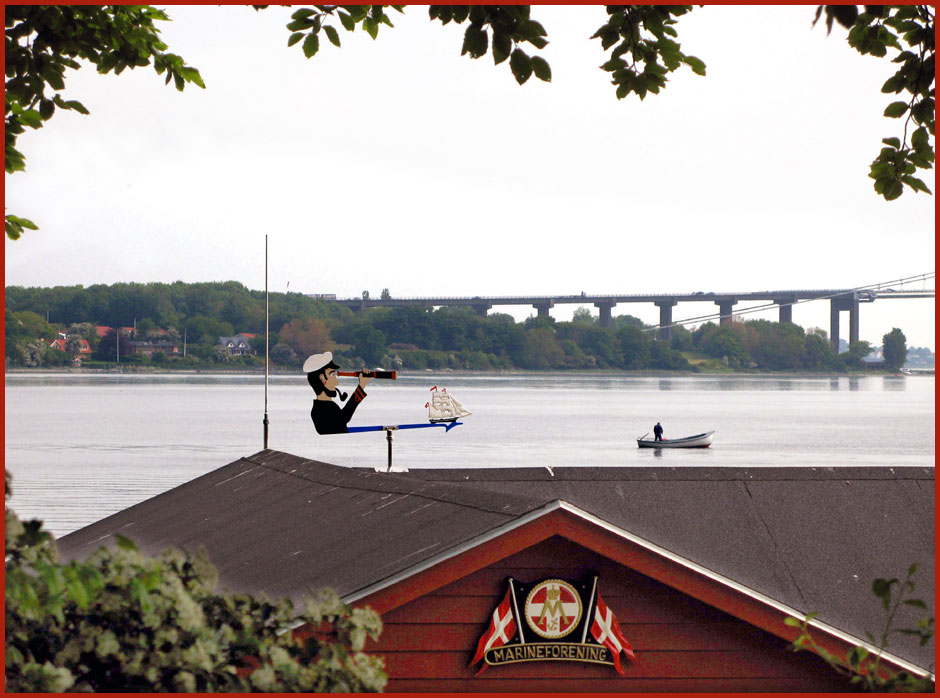
The wind indicator on the roof,
- logo on the wall, - and fishing boat on the water.
(Photography by Karsten Petersen)
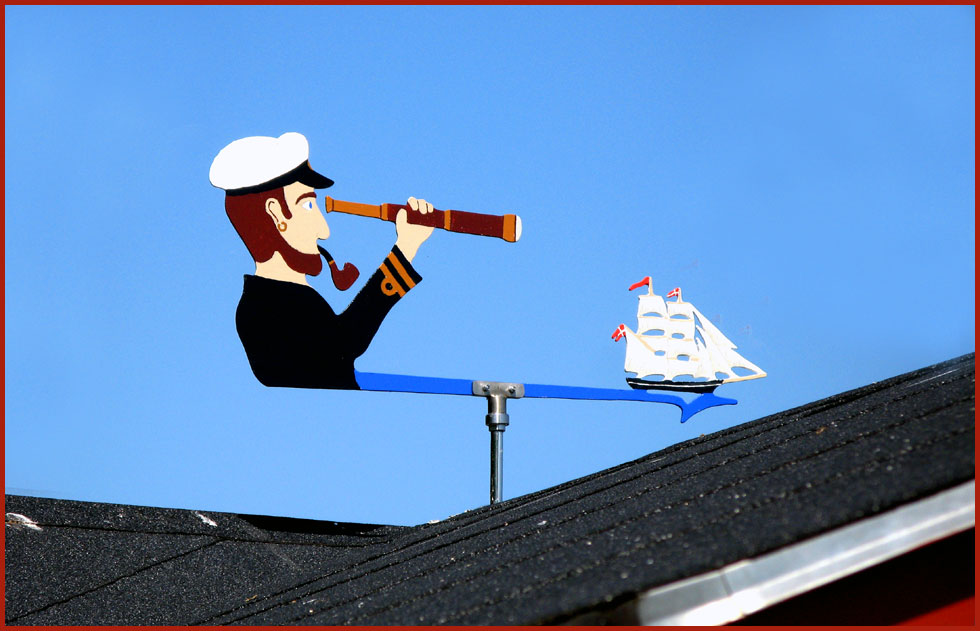
A closer look at the wind indicator,
- a sailor looking over the ocean.
(Photography by Karsten Petersen)
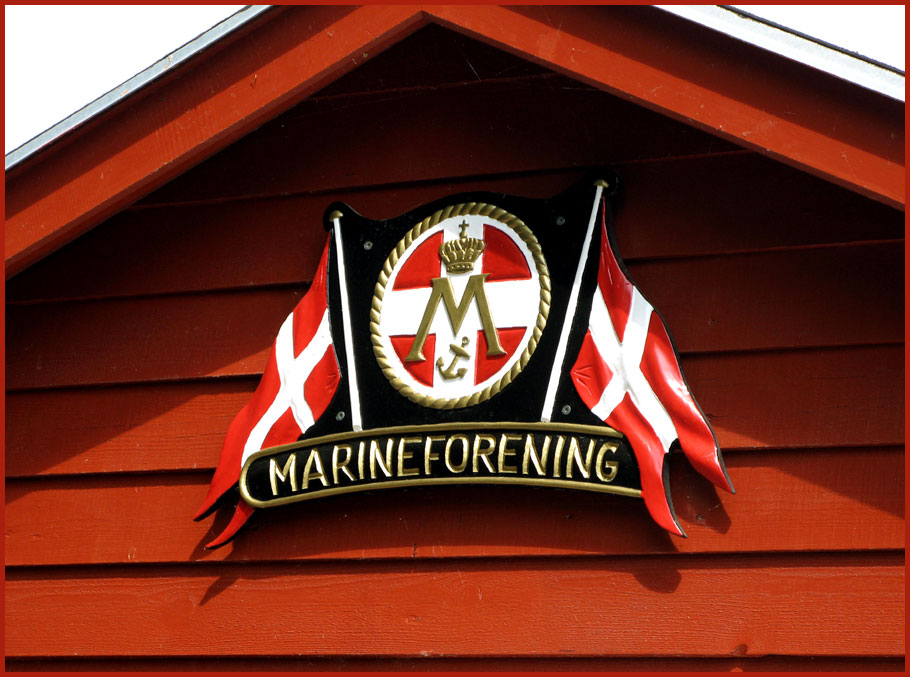
And a closer look at the logo
of the Navy Association.
(Photography by Karsten Petersen)
To become a member of the Danish
Navy Association, - "Marineforeningen" -, does not necessarily require
that you have served the Navy, - like I did myself.
Actually it is enough if you
have some special interest in maritime matters or has some sort of connection
to the sea.
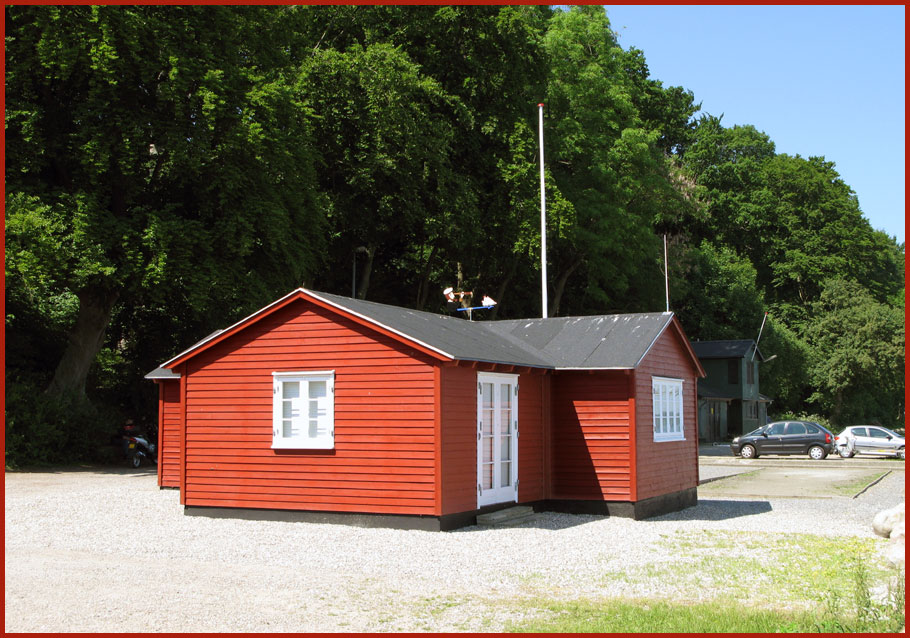
The club house of Middelfart
Navy Association.
The green painted house behind
the navy club is club house of the local divers.
(Photography by Karsten Petersen)
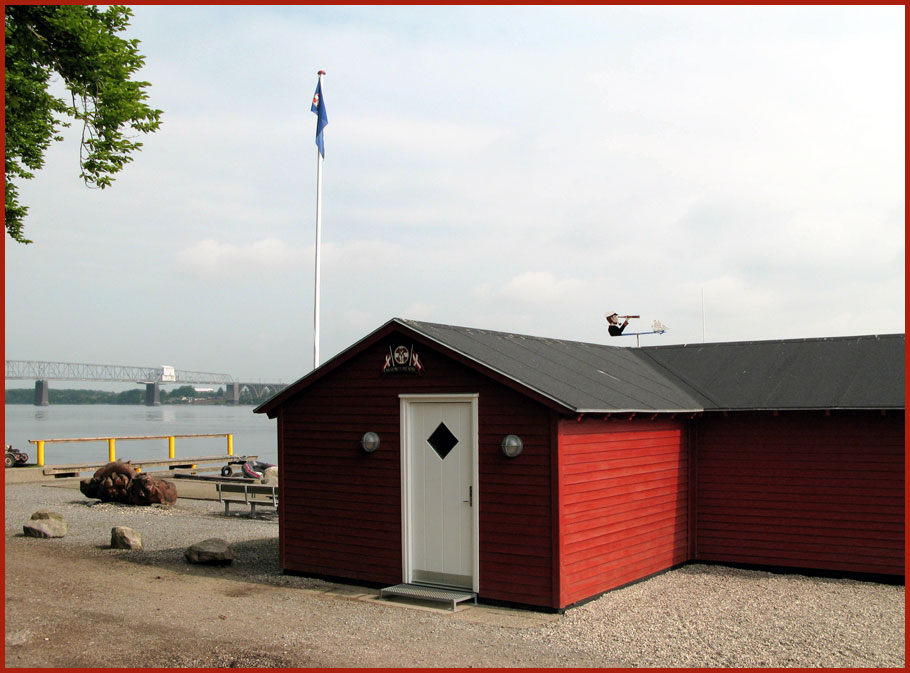
A final view of the very perfect
located club house of the Navy Association in Middelfart.
- the "sailor" on the roof
still looking over the sea - -
(Photography by Karsten Petersen)
--------------------------------------------------------------------------------------------------------------------------
And now to something completely
different:
- The Whale Hunting -
As you have seen on my picture
of the old city logo for Middelfart, - it shows a middle age ship with
a whale underneath.
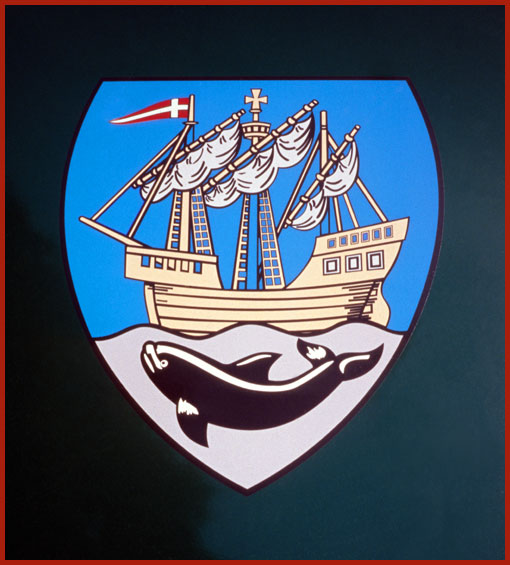
The former city logo of Middelfart.
(Photography by Karsten Petersen)
The size of the whale on that
logo is just as big as the ship's hull, - and if this picture should refer
to the whale hunting that took place from Middelfart in the old days, -
the size of the whale is highly exaggerated.
We are NOT talking about brave
sailors hunting the giant sperm- or blue whales from small open boats thousands
of miles away on the big, icy oceans, - but a much smaller and local kind
of whale of the porpoise family.
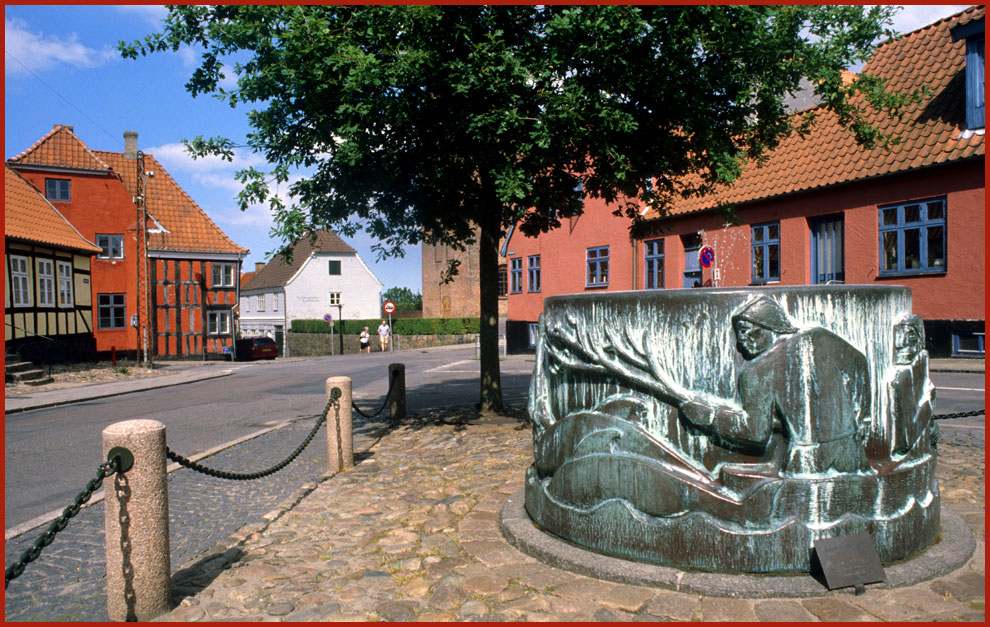
"Marsvinebrønden", -
the "Porpoise Well" -, at "Knorregade" in Middelfart.
- a memorial for the whale
hunters -
(Photography by Karsten Petersen)
A much more correct picture
of this small, local whale is shown on the "Marsvinebrønden" , -
the "Porpoise Well" -, as you can see on the picture above, - where the
size of the whale is seen in relation to a human being, - the whale hunter.
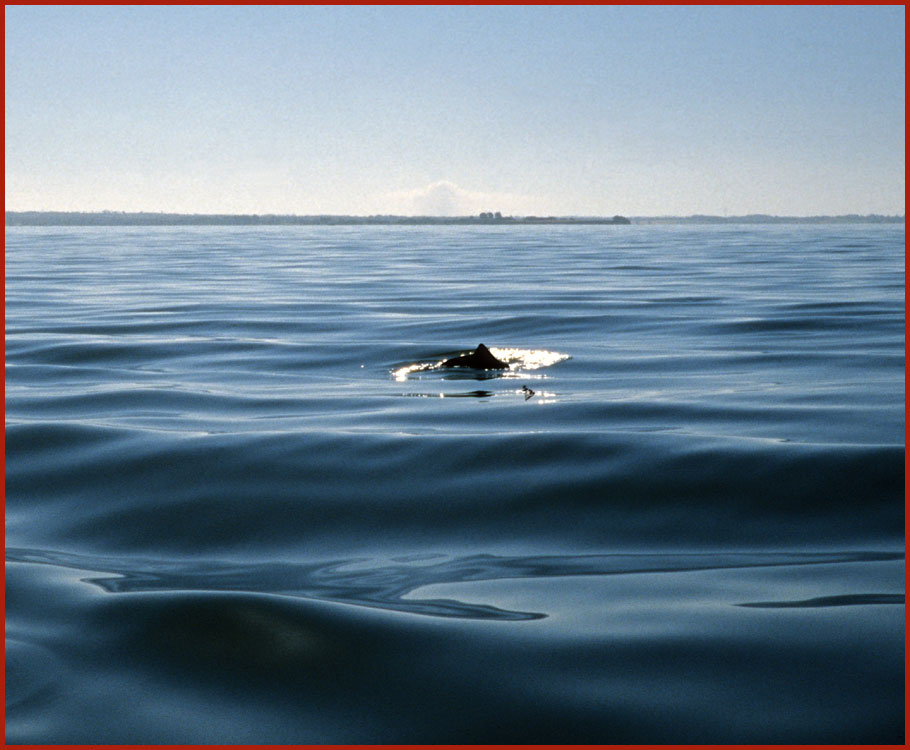
The real thing: "Thar she blows!!!"
- a porpoise has just been
up to get air, - back and dorsal fin exposed -, before diving again -
(Take note of the very beautiful
wave pattern!)
(Photography by Karsten Petersen)
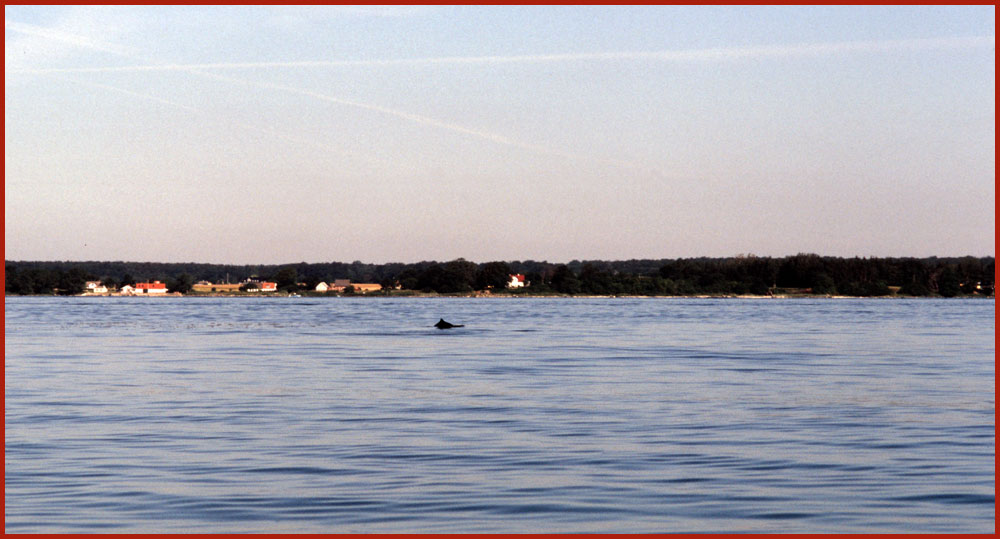
Here , - seen from a distance
-, the characteristic black back and dorsal fin of a whale.
(Photography by Karsten Petersen)
These small porpoises, - "marsvin"
in Danish -, I have seen and been very close to for about 45 years, - or
as long as I have been navigating the local waters, where a lot of those
whales apparently like to live.
Sometimes I have had them following
on each side of my boat, - so close that I could actually touch them -,
and often they can be seen in great numbers "rolling" in and out of the
water, and you can hear the "piggy" sound when they blow air - - -
In spite of "thousands" of
sightings, I have, - unfortunately enough -, never been so lucky to photograph
them in the magic moment when they just break the surface and blow air
- - -
They are simply too fast for
me, because I only use totally manually operated cameras, and before I
have got hold of my camera, - aimed it, - focused, - and adjusted time
and shutter speed, - the whales are long gone - - -
They will, - of course -, return
to the surface again, but you do not know when or where they suddenly might
reappear.
Therefore the pictures above
are most likely the best I have, - but now I have invested in a digital
camera, that can operate fully automatic , - and fast -, so who knows????
Maybe the future will bring
some better pictures of our small, local whale, - the "marsvin" - - -
Beware whales: I have NOT given
up! In fact I am convinced, that one day I will outperform you, - and be
the fastest!
-----------------------------------------------------------------------------------
The hunt for these small whales
were unique for Middelfart through several hundred years, where a good
years catch could number about 2000 whales.
The hunt took place during
the winter season when the whales migrated in large numbers through Lillebælt,
- right past the narrow section of the belt, - and Middelfart.
When the whales arrived, the
hunters formed a line with their small boats, - made a lot of noise -,
and chased the whales into the long and narrow fjord, - Gamborg Fjord -,
where the whales were caught in nets at small island Svinø.
The name Svinø refers
to the porpoises, - marsvin in Danish -, and should therefore rightfully
be called MARSVINØ, but is only referred to as SVINØ, where
the first three letters "MAR" are missing.
See the following pictures from
SVINØ, - "MarSVINØ" -, a beautiful and quiet little island,
where no traces of the whale hunting can be seen anymore - -
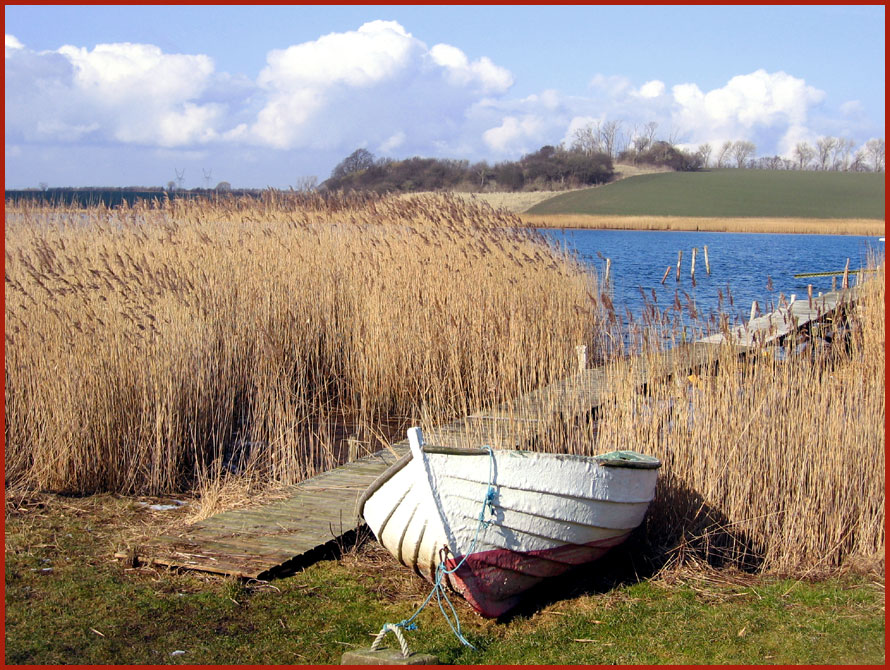
Svinø, - "Porpoise Island"
- view from Svinø towards
island Fyn -
- take note of the small overgrown
hill on Fyn. It is the ruins of ancient fortress "Gamborg" -
(Photography by Karsten Petersen)
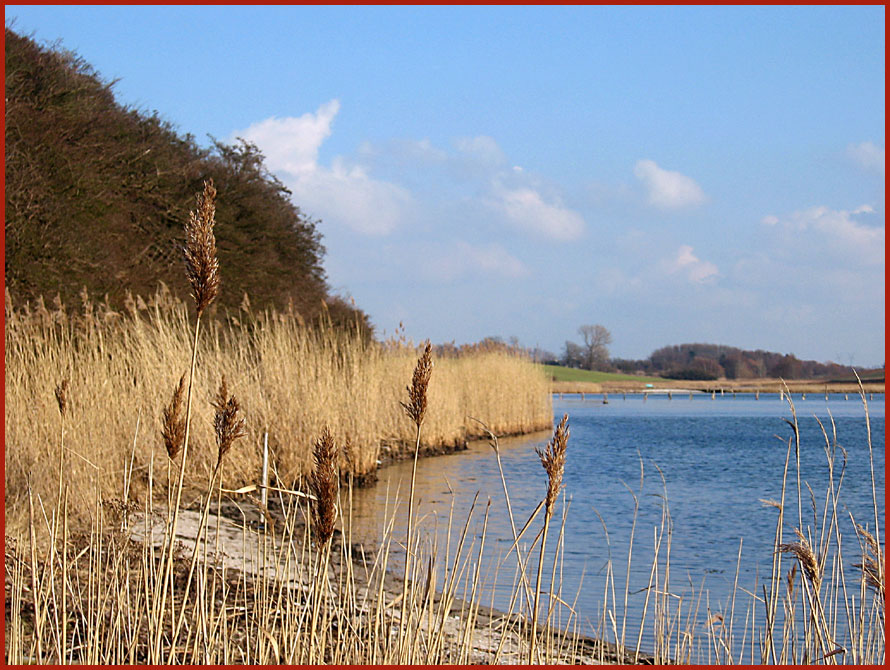
Coastal view on island Svinø,
- "Porpoise Island".
- now a very peaceful little
island, but former a "killing field" of thousands of porpoises -
(Photography by Karsten Petersen)
After having met their destiny
at at Svinø, the small whales were dragged up on the beach at Teglgård,
- a picturesque community at the south side of Middelfart -, to the opposite
side of the old harbour.

Teglgård
- this coast, - to the left
-, is the place where the whales were landed -
(Photography by Karsten Petersen)
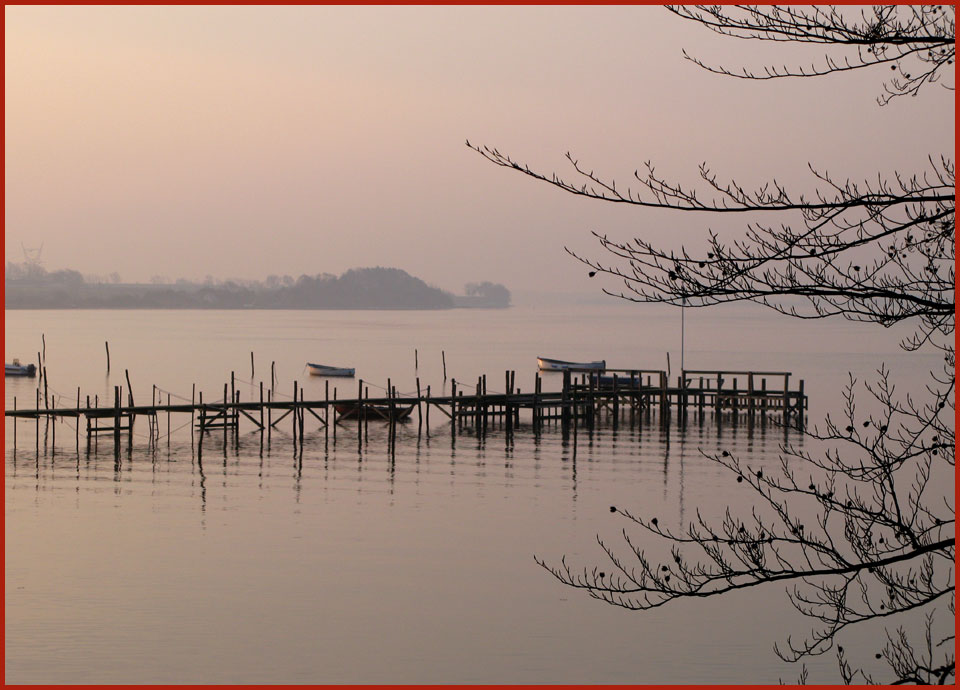
The bay at Teglgård
- the bay where the whales
were landed -
- island Svinø is behind
the misty headland in the background -
(Photography by Karsten Petersen)
From the beach at Teglgård,
the whales were taken to the boiling plant where the whale oil was collected.
Nothing remains of this whale
boiling plant, but the place is marked by a very modest stone with an inscription.
It is near the old part of
the city, - not so far from "Knorregade" , on the road to Gammel Havn -,
and the place is now occupied by a doctor's house.
Towards the end of the eighteen
hundreds, the use of petroleum and gas had replaced whale oil, and the
whale hunting was only taken up again in short periods during the first-
and the second World War, when petroleum products were difficult to obtain.
After that the traditional whale
hunting based in Middelfart was over for good, and in 1967 the small whale
became a totally protected species, and could no longer be hunted.
However, - about 3000 of the
small whales get accidentally caught in fishing nets every year, and that
is actually about 1000 more than was caught on purpose in a good season
in the old days - - -
Work is going on to find means
that prevents the whales to be caught in fishing nets, but so far without
success.
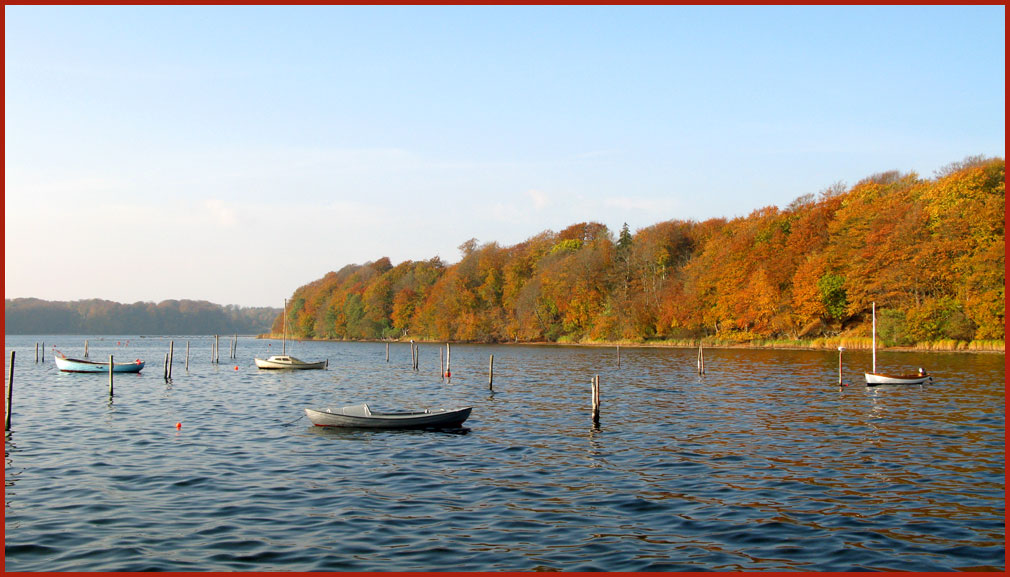
Teglgårds Bugt
- a view over the scenic bay,
- Teglgårds Bugt -, where once the whales were landed -
(Photography by Karsten Petersen)
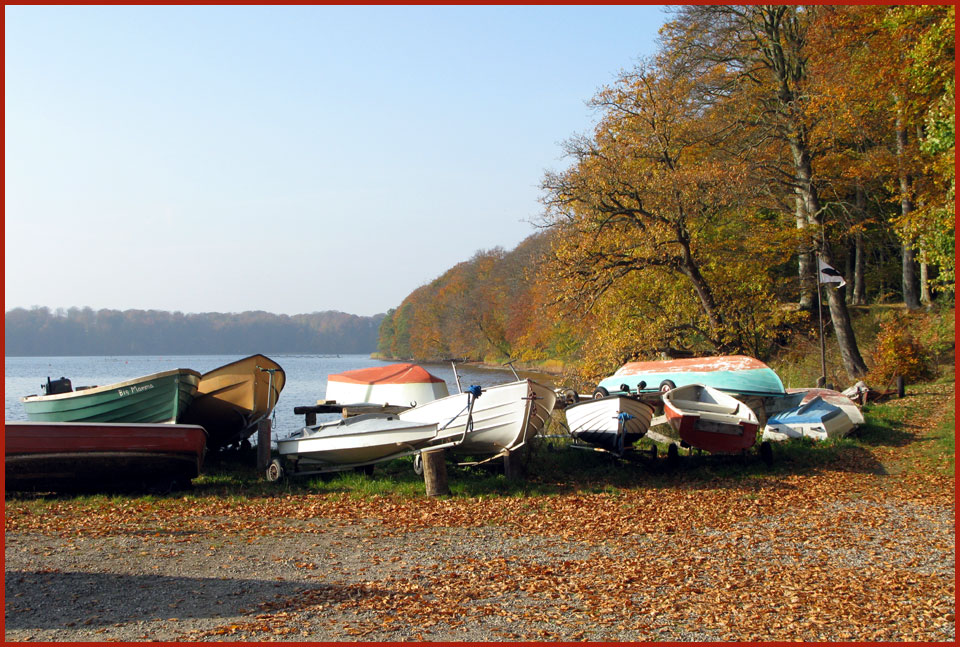
Small boats, - and a "whale
banner"
- take note of the small banner
with a whale picture, - the only reminder of the whale hunting days -
(Photography by Karsten Petersen)
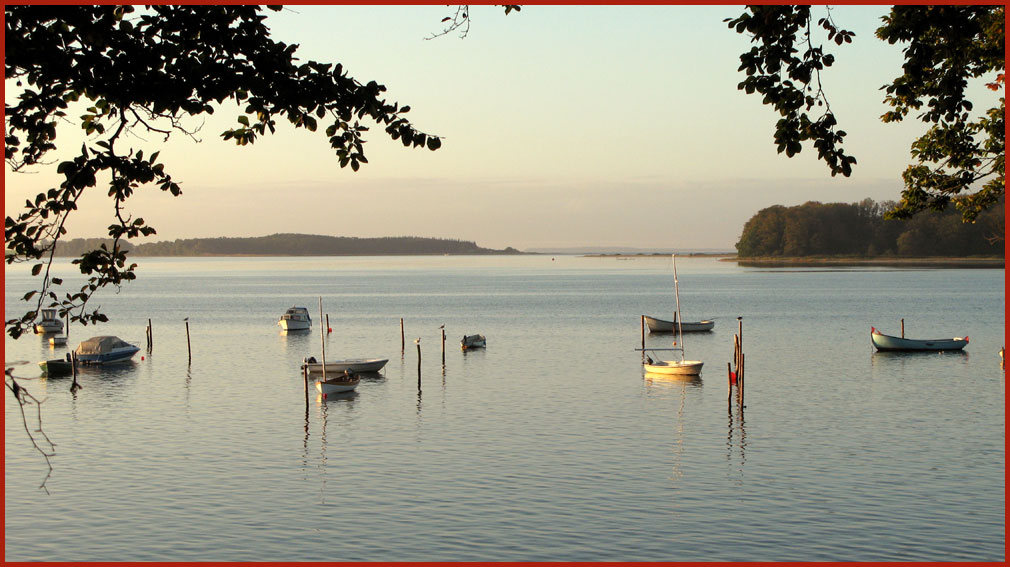
Teglgårds Bugt
- the bay, - Teglgårds
Bugt -, a very beautiful place -
(Photography by Karsten Petersen)
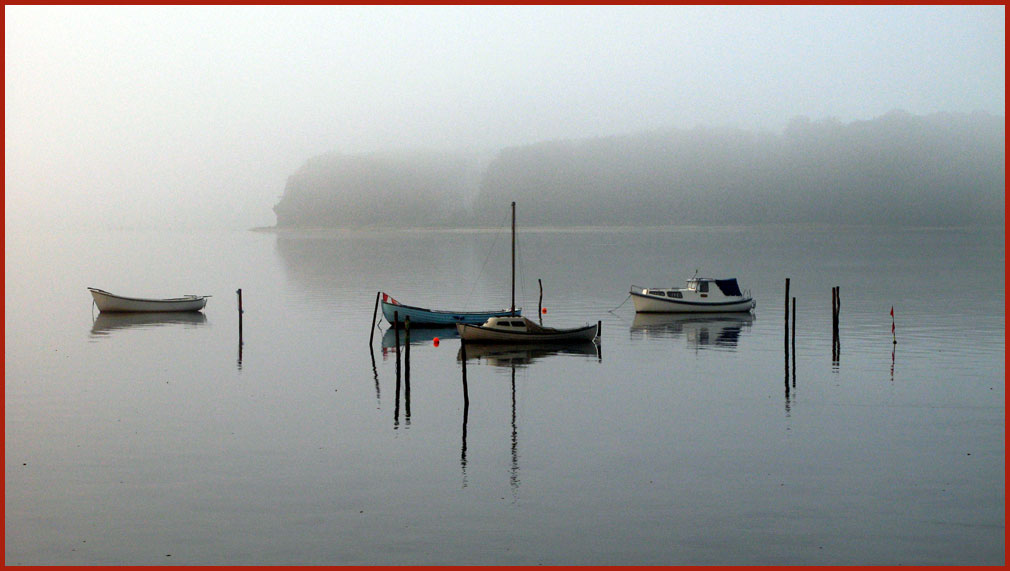
Teglgårds Bugt in mist
- the bay is beautiful in all
seasons and in all conditions -
(Photography by Karsten Petersen)
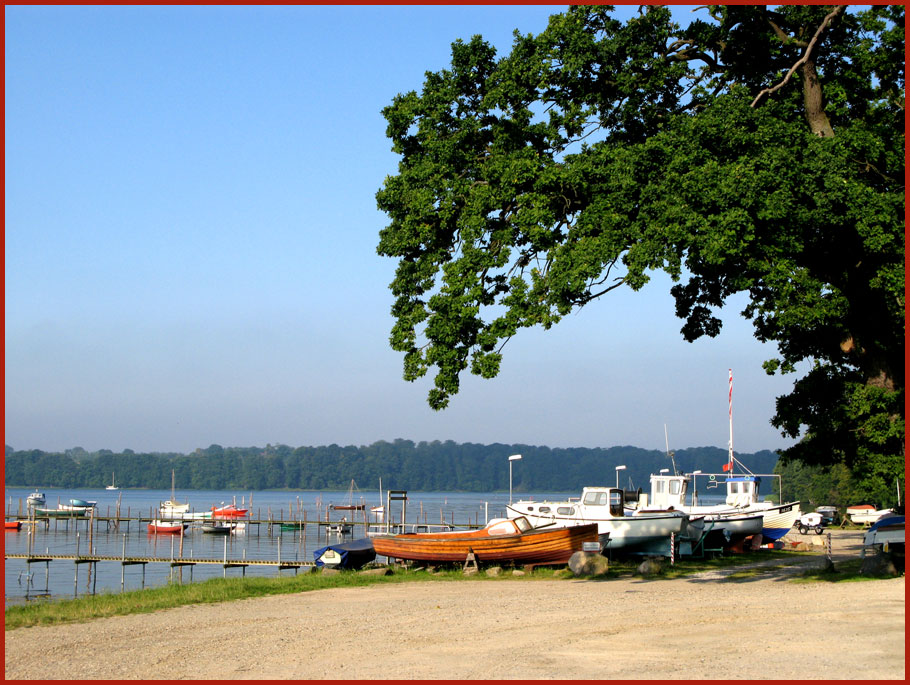
The fishing boats of Teglgård
- take note of the huge oak
tree to the right -
(Photography by Karsten Petersen)
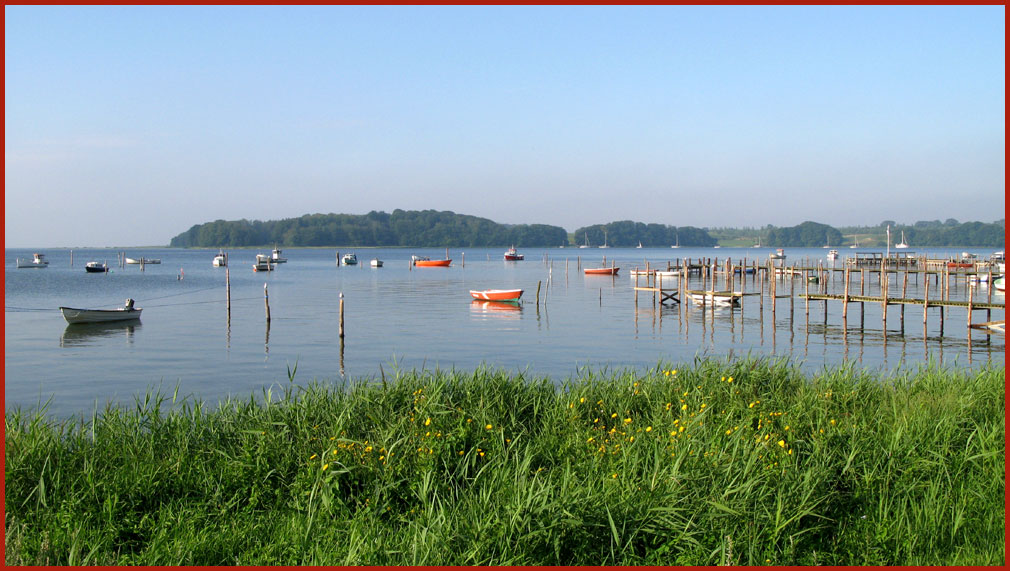
Teglgårds Bugt
- a final view over the Teglgård
Bay and the beach where whales were once landed -
A most beautiful place, - no
wonder that the whales like it here -
(Photography by Karsten Petersen)
Back to "The
Ships"
Page initiated: Jan.04.2008
Page updated: Jan.05.2008


























